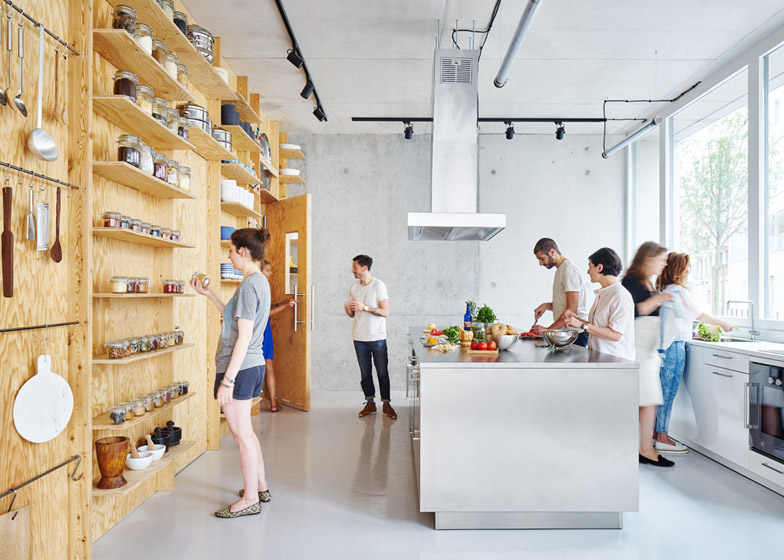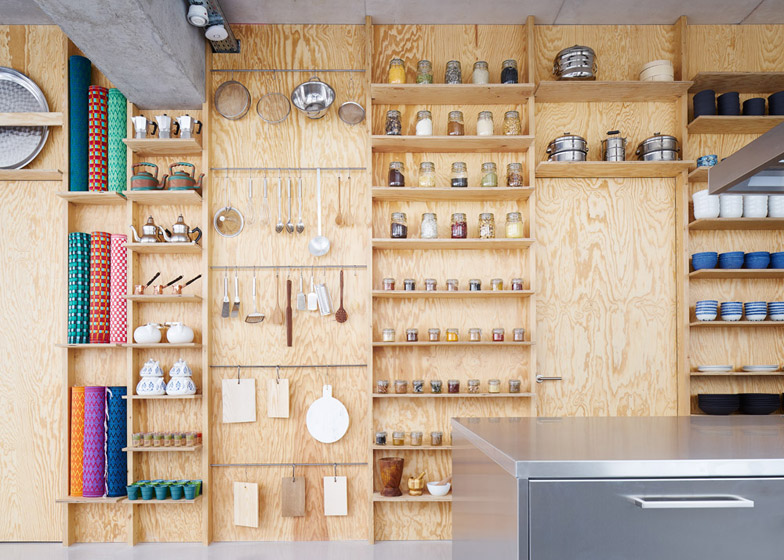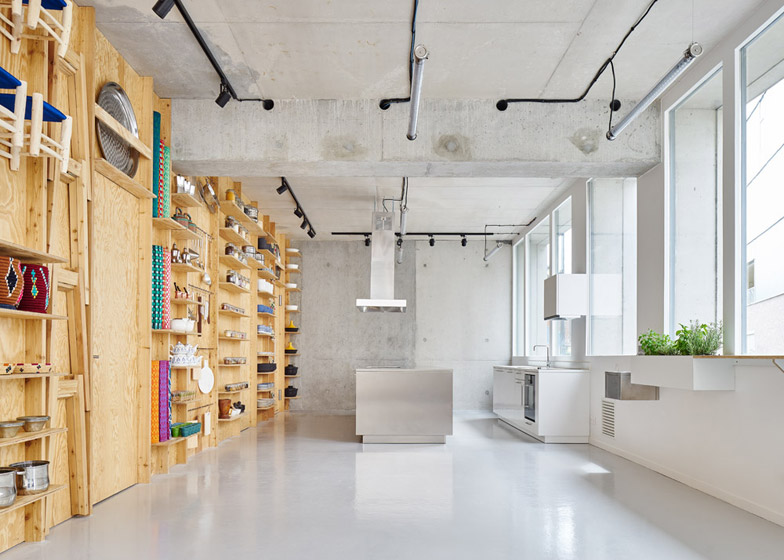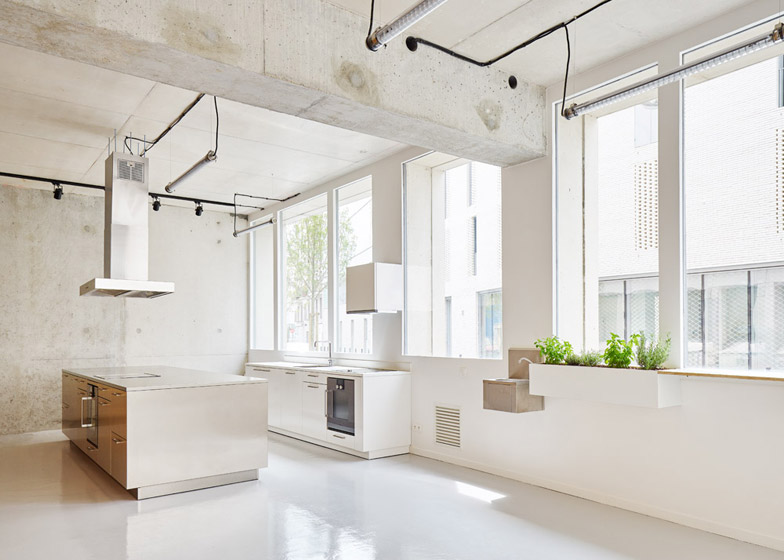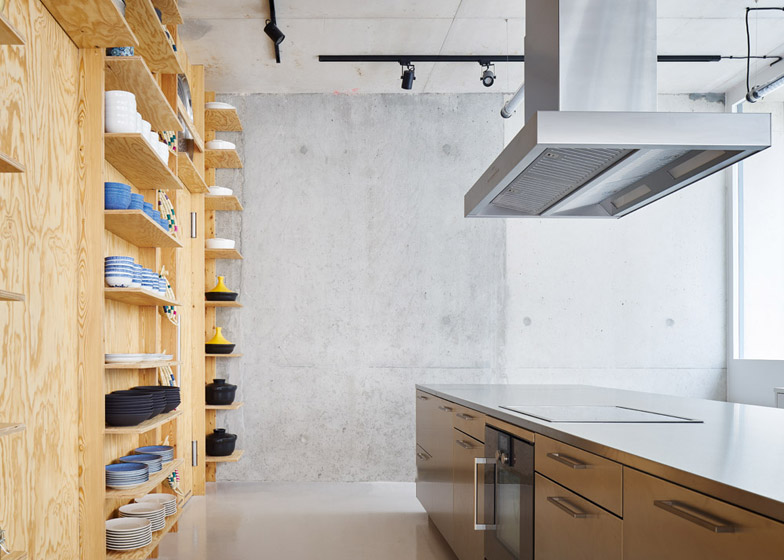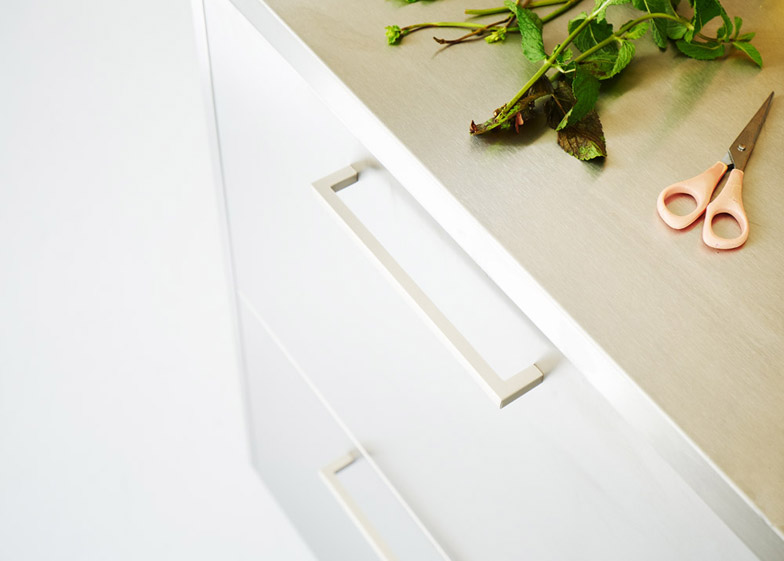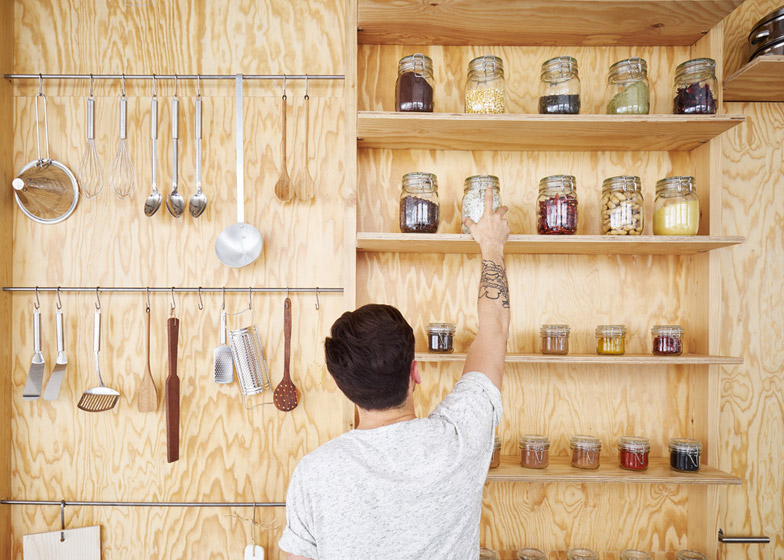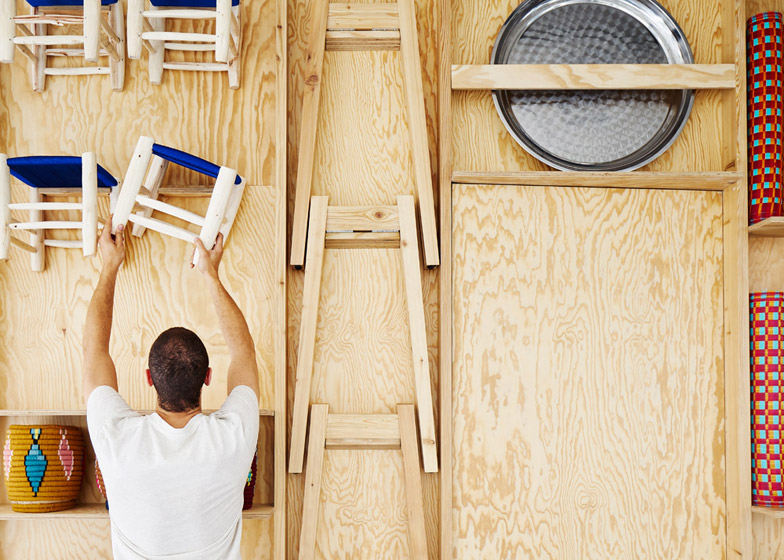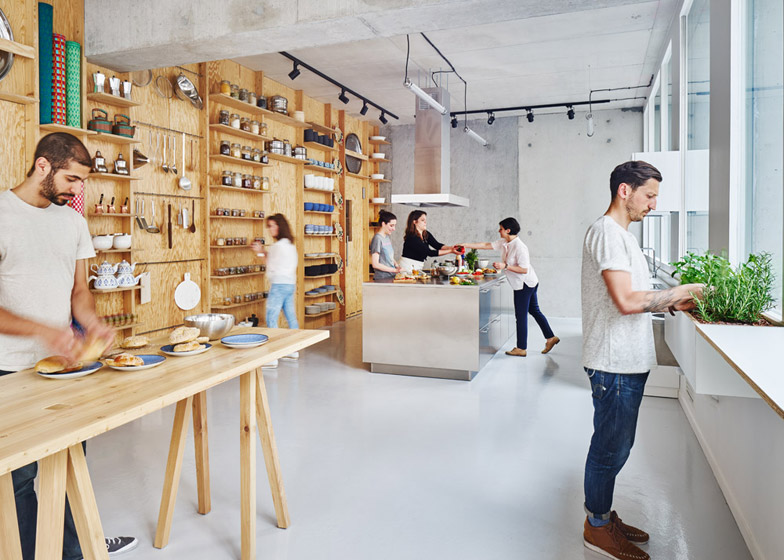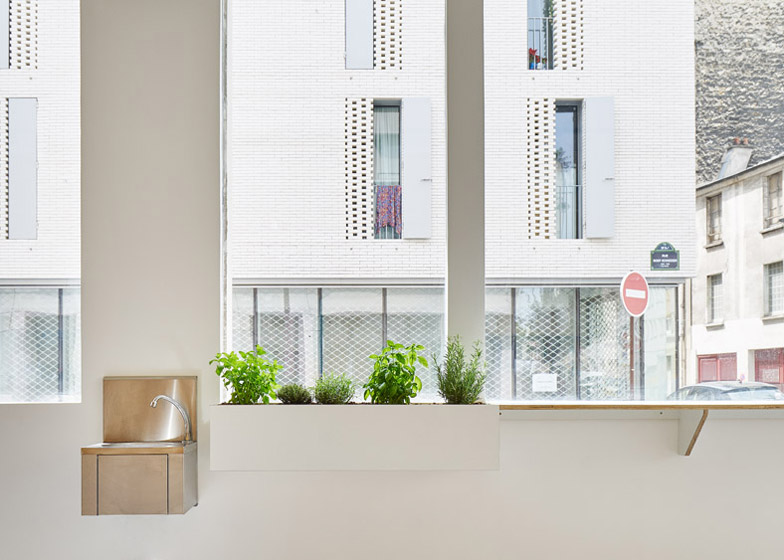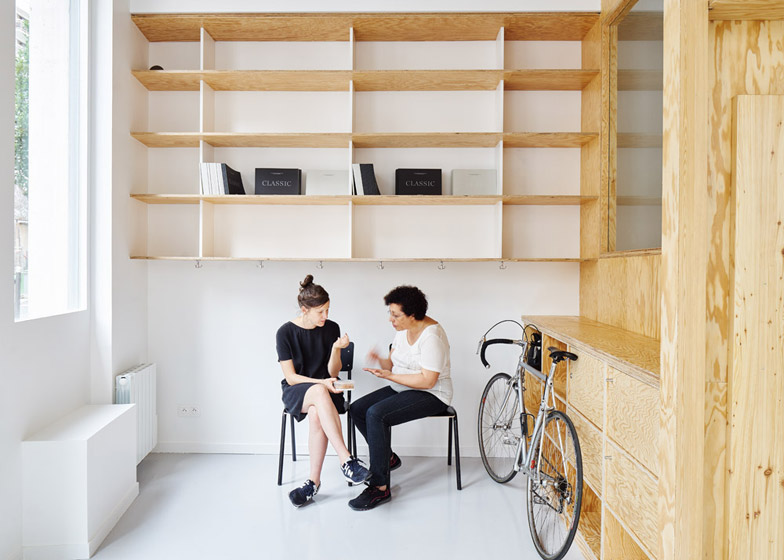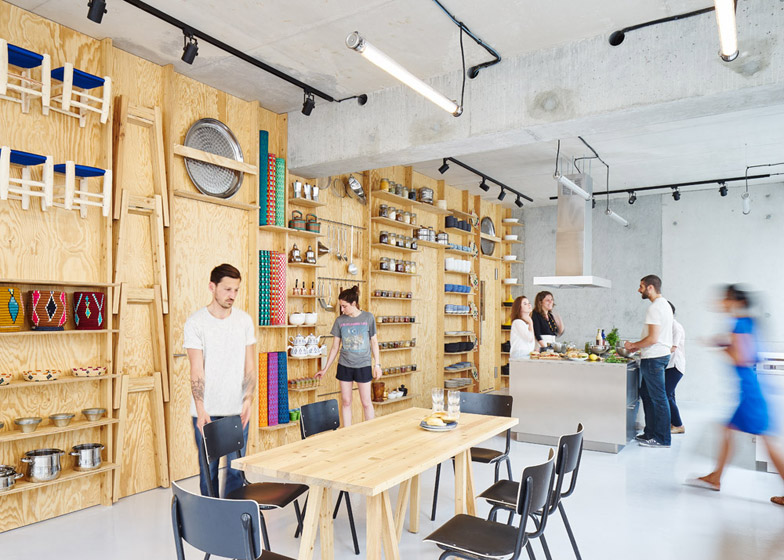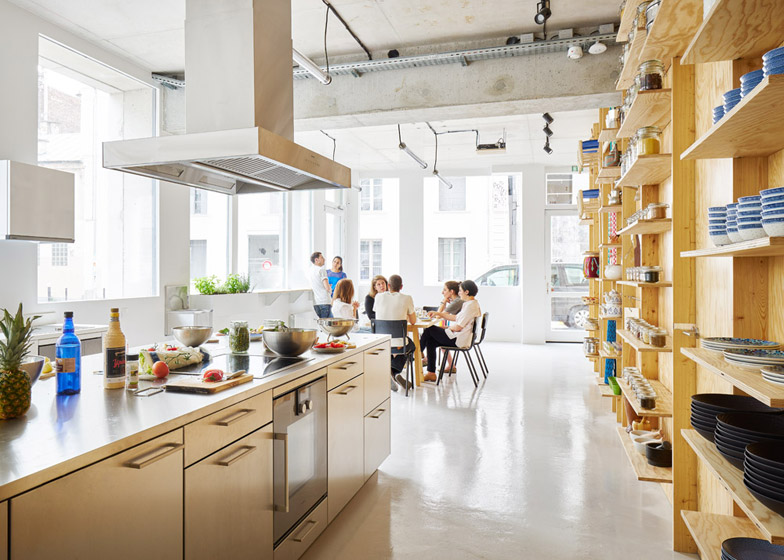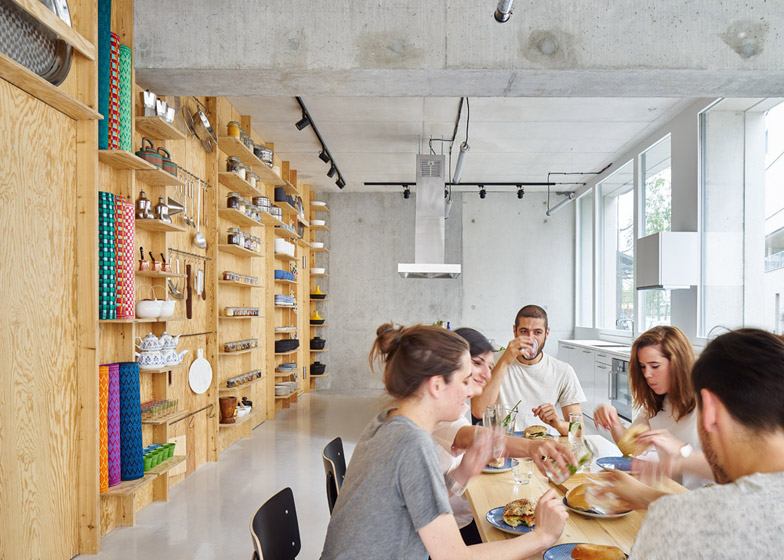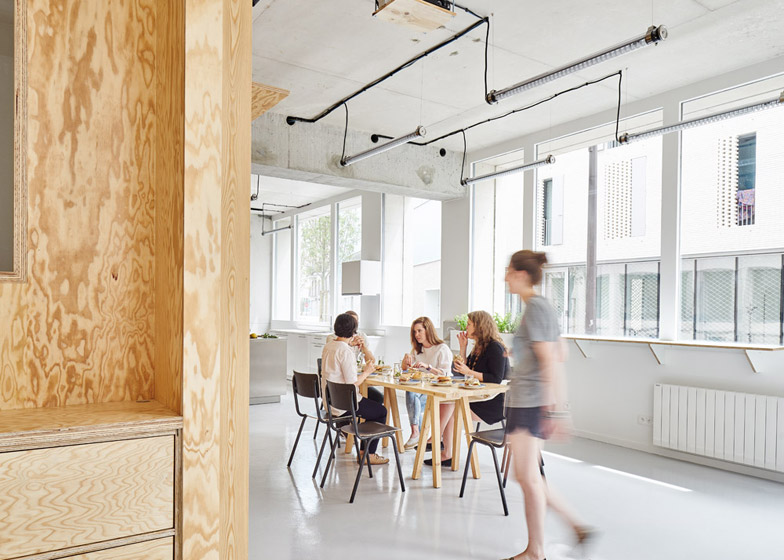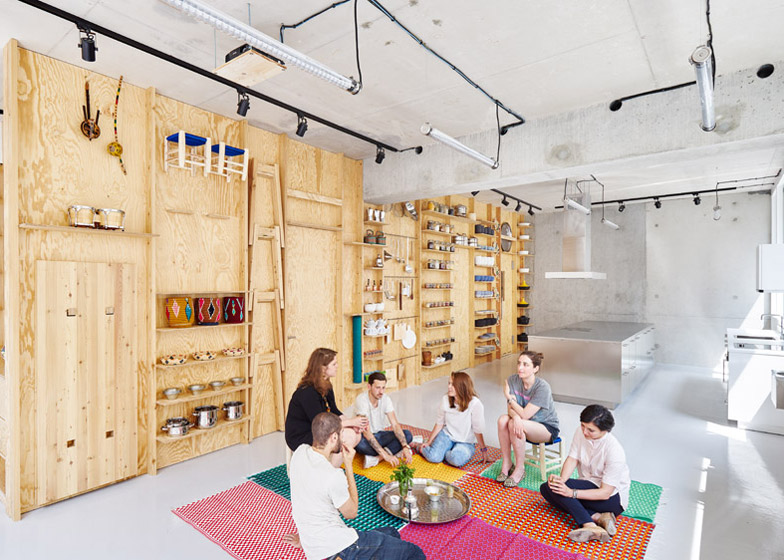A plywood storage wall stores and displays furniture, ingredients and cooking apparatus at this Paris culinary workshop by architecture studio Septembre (+ slideshow).
Designed for French culinary company Kialatok, the space offers a variety of workshops taught by international chefs, but also serves as a venue for cultural events that vary from seminars to parties.
Due to the different purposes needed from the space, Paris-based Septembre was briefed to create a flexible and adaptable environment.
"The clients wanted a flexible space that could be adapted depending on the format of the cooking class and the different types of events they organise," explained the team, whose past projects include a woodland cabin and a converted farmhouse.
"We wanted to show the diversity of cultures and ways of cooking and consuming food," project architect Sami Aloulou told Dezeen. "Our idea was to synthesise this variety into a simple architectural element."
With this in mind, Septembre decided to present the cooking apparatus and ingredients on a custom-built plywood storage wall.
"The wall shows the diversity of the cooking classes, not only through the exposition of the different objects used for cooking but also by the different ways to savour a meal," said the architects.
Purpose-built shelves and hooks store buffets, crockery and jars of spices – allowing the students to easily access what they need.
Trestle-style legs and table surfaces, along with small blue-upholstered stools, can also be unhooked for additional seating and work surfaces.
"We designed the seating and the wall itself," said Aloulou. "Then they were technically developed and built by a carpenter of the atelier Fabric-K".
Situated on the ground floor of a building in the 18th arrondissement, the space features raw concrete walls and floors that the architects were keen to retain.
Large windows run along the facade of the building, flooding the cooking area with natural light.
"We wanted to keep as much connection with the street level as possible," explained Aloulou. "The neighbourhood had to be present to remind us of the social context."
The wall divides the space into two sections: a public area where the classes take place and a private area containing changing rooms, an office and dry food storage.
The architects opted for subtle materials to highlight the colourful objects and ingredients, as well as compliment the exposed concrete.
Light grey polished resin was used for the floor, while the central kitchen island is made from stainless steel.
Other designs for culinary school interiors include a cooking workshop in Lithuania carpeted with fake grass, and a bright yellow space in Normandy that references a French dessert.
Photography is by David Foessel

